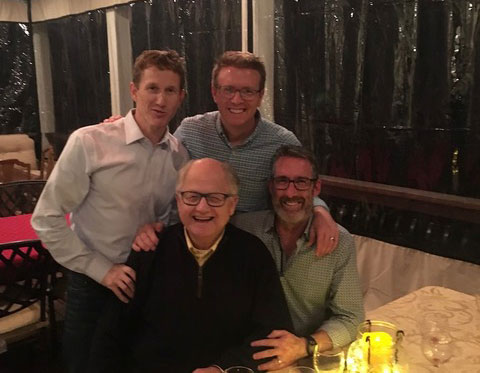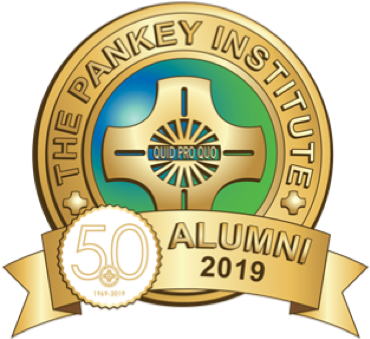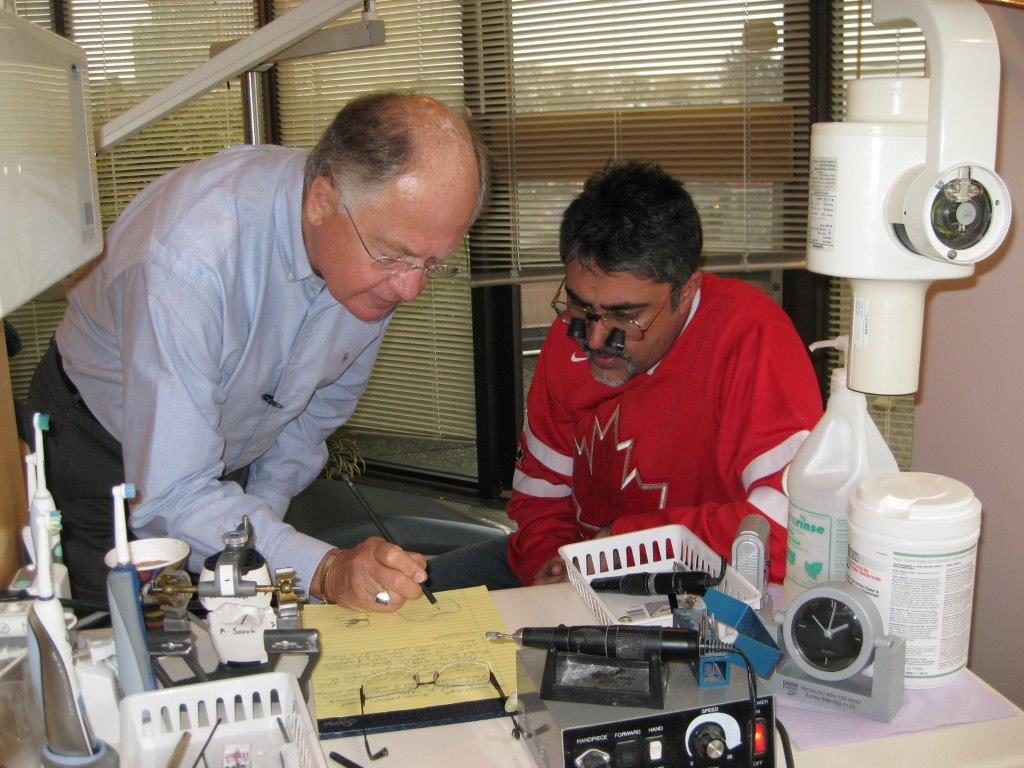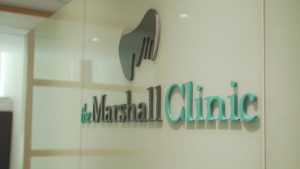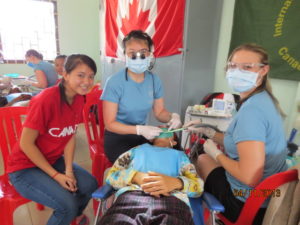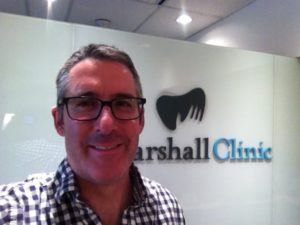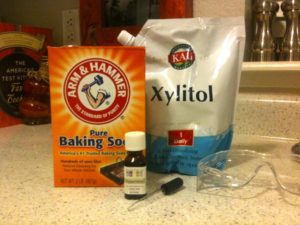Above is the symbol for a very important place called the Pankey Institute. This year I am planning on attending the 50th Anniversary meeting in September so that I can participate in honouring a special person, Dr. Richard Green. I continue to spend time learning from him at Sinking Stones Study Club (you can ask me the story behind that someday) meetings in Florida which occur twice per year. Last year I was able to realize a career goal of giving back to the Institute by making a $20,000 USD donation in Dr. Green’s name. The donation specifically helps other dentists to be able to afford learning at the Institute. Let me tell you the story of how I got involved with the Pankey Institute and how it helped me to become the dentist I am today.
I remember it all very clearly, it was 1995, I was 3 years out of dental school, and a very nice lady named Terry D. had an upper left 1st molar that needed an onlay. We prepared the tooth very carefully and made a provisional restoration for her to wear while the lab was making the gold onlay. I also measured the thickness of the provisional to make sure that I had reduced the tooth enough to allow for enough gold to be strong. The next week Terry returned, and we cemented the new gold onlay onto her tooth, checked the bite, and made minor adjustments as needed. I was thrilled! The onlay fit perfectly and Terry was very happy with how the process had gone.
A couple of weeks later, she returned saying that something didn’t feel quite right with the bite, so I got out the articulation paper (ribbon we make teeth with), checked the bite and then adjusted the onlay once again. Terry said it felt better and away she went until another couple of weeks had passed and she was starting to have some pain in her jaw. This cycle repeated itself every 2-4 weeks and then every 4-6 weeks for the better part of a year. During this time, Terry’s symptoms progressed from “something doesn’t feel right,” to sore jaws and headaches. All the time I continued to make adjustments until finally one session I actually ground through the onlay!
At this point, I really didn’t want to be a dentist any longer. I was thinking about leaving general practice and going to do specialty training. My thought process was that specialties must not have these types of problems, so I even started doing research on which schools offered the programs. Then a few things happened. First my father, Dr. Don Marshall, suggested that I would miss the relationships with my patients if I did a specialty. As such, he suggested that I contact his friend Dr. Bud Sipko to see if he had any suggestions. In the meantime, I was doing research on who was offering comprehensive training in Occlusion (how the jaws, muscles and teeth work together) and found one course; however, it was $11,000 per year and I just didn’t have the money to do that. Upon talking to Dr. Sipko, he suggested that I might find Pankey helpful, and although it meant travelling to Florida, it was a lot more economical at $5000 per session. I booked my first course, Continuum level 1, and off I went!
For more on the history of the Pankey Institute check out http://www.pankey.org/about/history/. To say that my experience there had impact would be an understatement! I really feel that it saved my career by helping me find a way to be comprehensive and thorough with each of my patients so I could understand their individual needs. The course also helped me to better understand Occlusal Harmony such as how to figure out if there is a mismatch between where the jaw joints/muscles want to function and where the teeth fit together.
Armed with this information, I came back and took a new look at Terry’s situation, namely her bite. I discovered that her teeth and jaw joints were not in harmony. In fact, when I performed bimanual manipulation on her jaw, I found that she had an interference (a tooth that touches prematurely and causes the jaw to deflect from its harmonious position). This causes muscle hyperactivity and pain (depending upon how well you adapt), in Terry’s case this was happening two teeth in front of the tooth with the onlay!
The biggest gift of my career so far was that Terry’s muscles had a very well ingrained engrams (muscle memory that program our jaws to develop in a way that allows the jaws to move around teeth that get in the way) and when I changed the surface of her 1st molar, I got in the way of her engrams and she couldn’t adapt! I took bite records and mounted casts of her teeth on an articulator and performed a trial equilibration to see what surfaces needed to be modified on the teeth to allow her jaw joints and muscles to stay in their harmonious positions.
Having confirmed that the modifications needed were minor, I had Terry come back for another bite adjustment, this time managing the process to keep the jaw joints in their harmonious positions while doing the more global adjustment. In a little over an hour she could bring all her teeth together with equal, simultaneous contact. In short order all her symptoms disappeared! We went on to restore 4 teeth in her upper left quadrant (yes, I replaced the onlay that I had cut a hole through for free) and after inserting them only had to perform minor adjustments at that one appointment. I have not had to touch these restorations or adjust her bite since and that was 23 years ago!
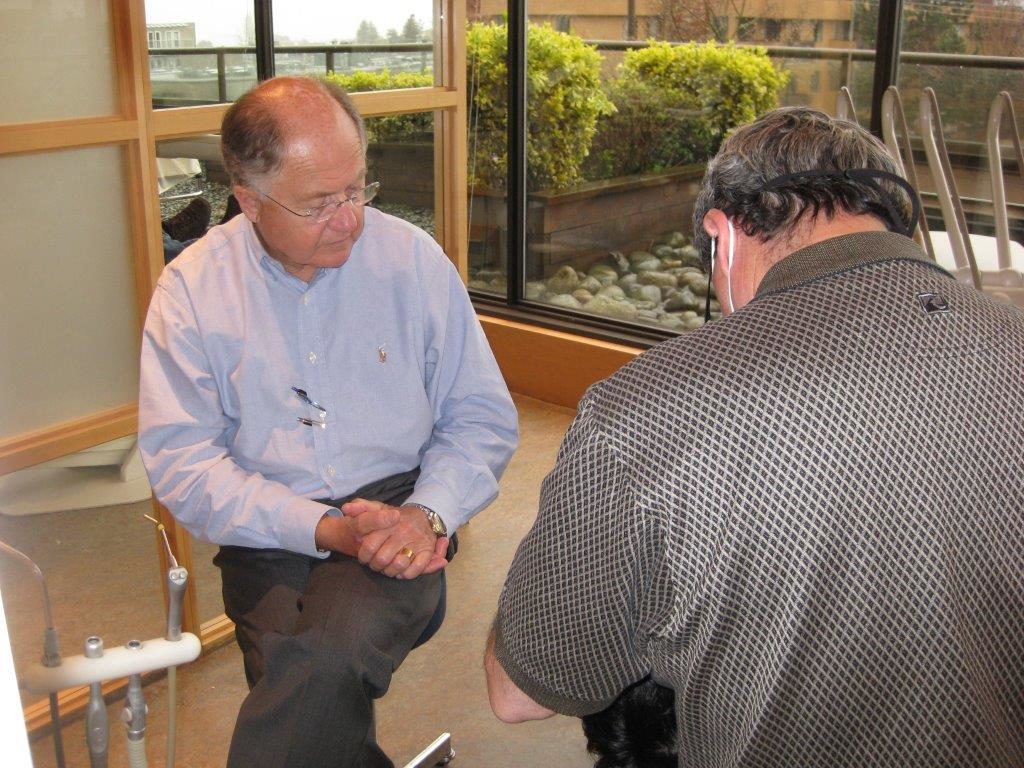
As I continued to learn about occlusion, I worked my way through 5 more levels at Pankey, then I got involved in study clubs. I eventually had Dr. Richard Green, whom I had met during my training at the Pankey Institute, come to mentor a study club for several colleagues and I here in Vancouver.
I continue to learn from and with Dr. Green twice per year. I count these times learning from Dr. Green as one of my blessings in life, and that is why Carina (my wife) and I decided to give $20,000 USD to the Institute in Dr. Green’s name. To help other young dentists learn how to practice dentistry more comprehensively and to have more predictable outcomes is a gift that I am blessed to give.

